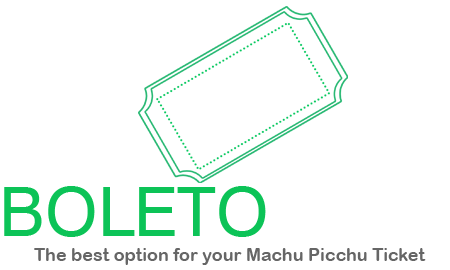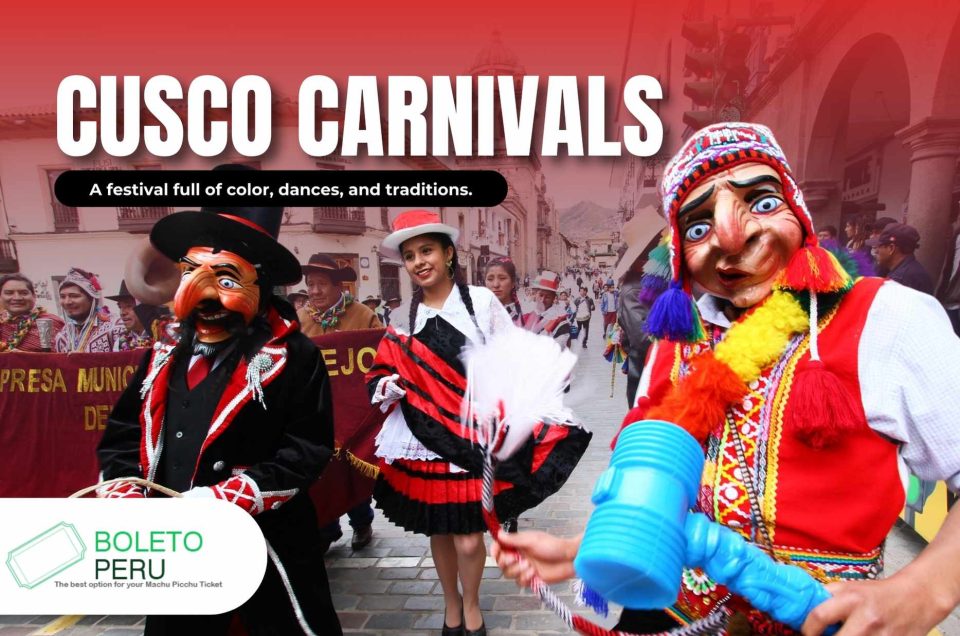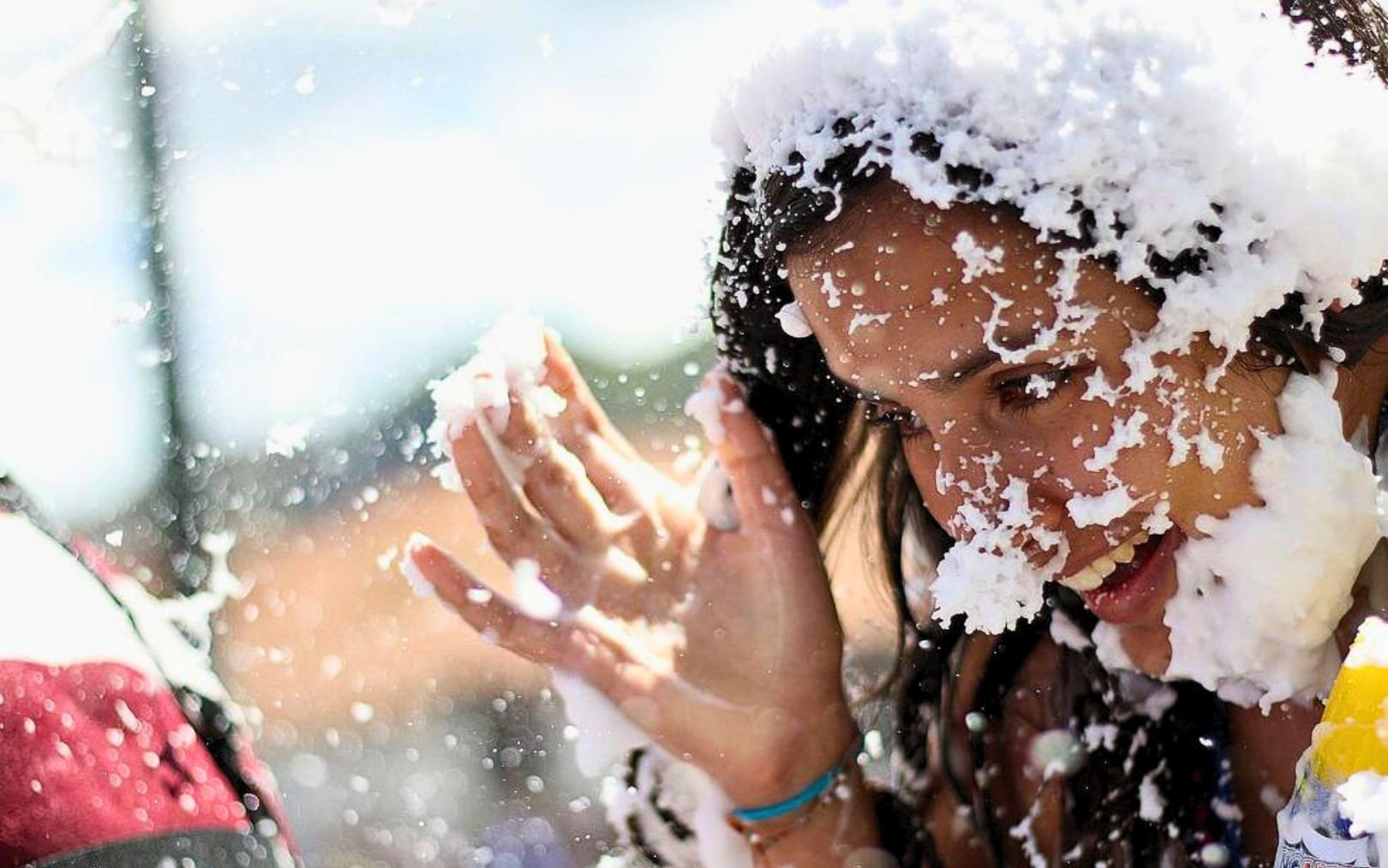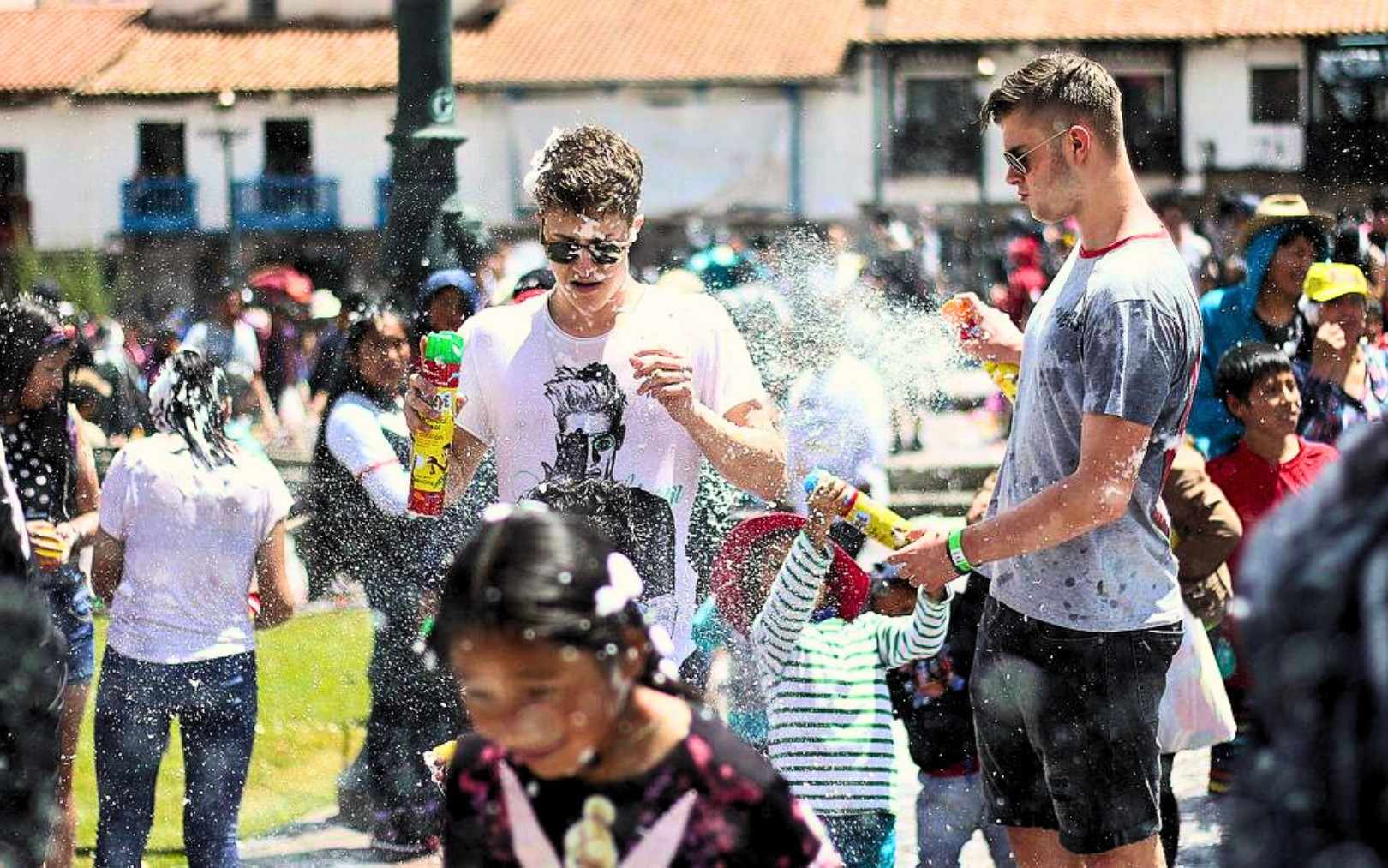Carnival in Cusco is one of the most exciting and anticipated festivals in the Cusco region. This celebration takes place between the end of February and the beginning of March each year (depending on the church calendar). It marks the start of a season full of music, dances, food, and traditions. During these dates, Cusco has a party atmosphere that invites local people and visitors from other countries to join this celebration. Everyone has fun with activities that show off the region’s cultural heritage.
The Charm of Carnival in Cusco
While Carnival is a lively cultural event that brings the whole community together in a celebration full of music, dance, and tradition. In the Cusco region, this festival starts with preparations in the neighborhoods, where groups form and practice typical dances that will fill the city streets with energy. Also, one of the most representative rituals is the “yunza”, an event where a tree decorated with gifts becomes the center of the party, surrounded by music and dance.
Carnival Dates in Cusco 2025
In 2025, the carnivals will start at the end of February and will include different traditional celebrations, including:
- Compadres Day: Thursday, February 20th
- Comadres Day: Thursday, February 27th
- Main Day: Sunday, March 2th
- Kacharpari: Sunday, March 9th
Festival of “Compadres” and “Comadres” in Cusco: A Tradition of Humor and Brotherhood
Carnival in Cusco starts with one of the most unique and awaited celebrations: “Compadres Day” and “Comadres Day”, two festivals full of humor, creativity, and friendship that strengthen the bonds between men and women in the community.
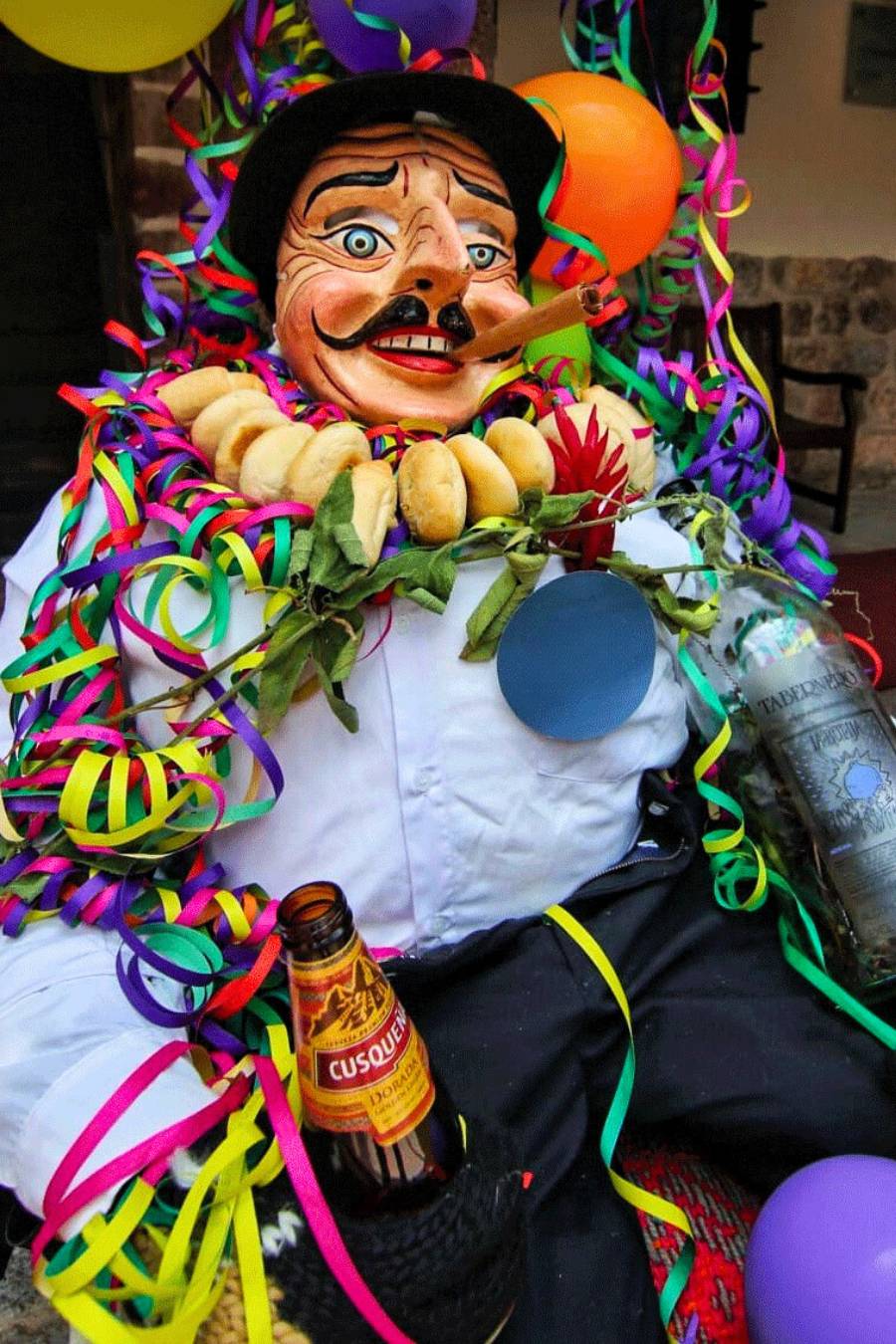 |
Day of the “Compadres” In the “Thursday of Compadres” celebration, women have their turn at joking around. They make rag dolls that look like men in a funny way. These dolls, called “compadres,” wear typical men’s clothes for this day. They are shown off in squares, balconies, markets, and even light posts. The dolls often have signs with clever messages that make men’s features look bigger and funnier. With laughs and jokes, the day goes on with get-togethers where women treat the men with music, dances and yummy local dishes. It’s a happy and friendly time for everyone. |
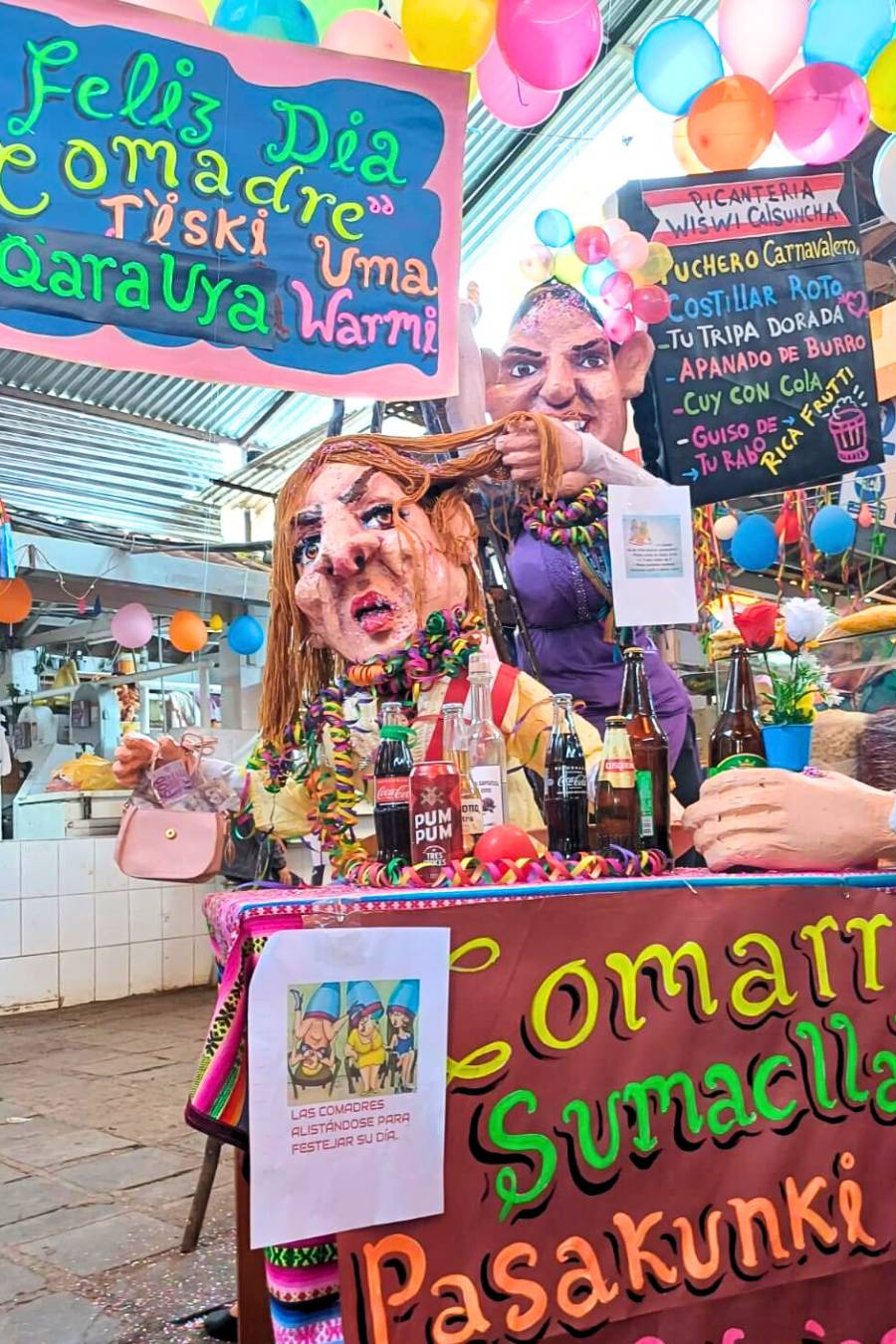 |
Day of the “Comadres” Carnivals start with the Thursday of the Godmothers, a celebration where men dress up as women with dolls in traditional clothes. These dolls are hung in different places around the city with funny sayings that highlight women’s characteristics in a playful way, always with respect and humor. Also, in this celebration, men organize parties for women, with music, dance, and the tasting of famous dishes from Peruvian and Cusco cuisine, making the brotherhood between both genders stronger. |
Main Day of Carnival
Cusco’s Carnival hits its best party day on Sunday, March 2th, when the Main Square turns into a big cultural celebration. Public and private groups, along with local people, get together to put on a colorful show with music and dances.
Groups of dancers in traditional clothes walk through the streets, doing dances that show Cusco’s variety and culture. Many of these groups have won awards at important festivals in the Sacred Valley of the Incas and the South Valley of Cusco, making sure everyone watching has a great time.
The party mood comes with the lively sounds of Andean music, with huaynos, carnivals, and songs played by local bands. Everyone – locals, visitors from Peru, and tourists from other countries – is invited to join the dancing and fun.
Traditions and Customs of the Cusco Carnival:
- Games with water and paint – Everyone, young and old, has fun with water, powder, and colorful stuff. It’s a big water fight in the Main Square!
- Parades and contests – Different dance groups try to show the best dances, costumes, and art in a parade full of creativity and color.
- Yunza – This is a very popular part of the celebration. A tree decorated with gifts is put in the middle of the square. People dance around it while music plays. They try to chop the tree down with an ax. When it falls, everyone runs to get the gifts.
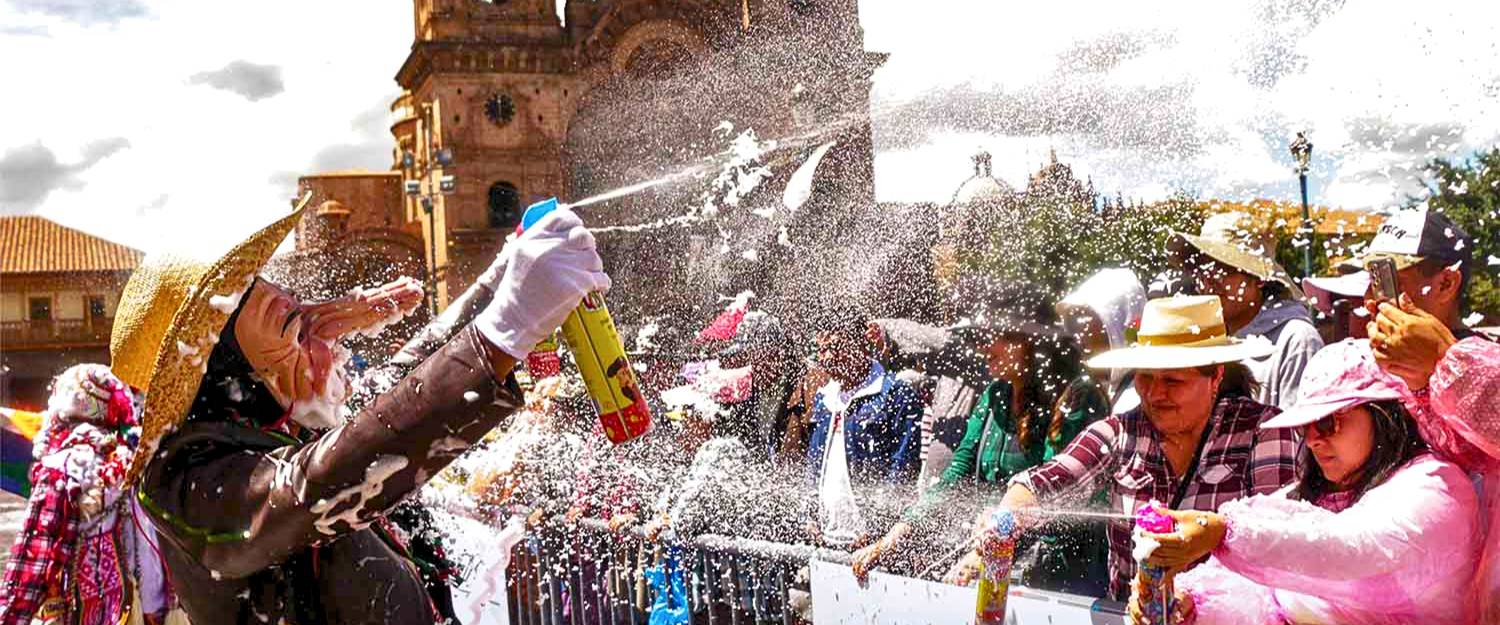
This is how the Cusco Carnival was experienced in the Plaza de Armas 2025
The Plaza de Armas of Cusco became, once again, the heart of the Cusco Carnival, welcoming local citizens and tourists in a celebration full of color, music and tradition. During Carnival Sunday, this iconic space was transformed into a big party stage in every corner.
The streets were filled with laughter and shouts of excitement as men, women and children participated in the traditional water game, throwing balloons and covering themselves with spray foam. The contagious energy of the crowd, combined with the sound of splashing water and the festive music in the background, created an unmatched atmosphere that showed the spirit of the Cusco carnival.
Beyond the Plaza de Armas, other places in the historic center were also meeting points for people who were living the carnivals, who took advantage of their large spaces and water fountains to resupply and continue with the fun.
|
|
|
The Big Closing of Carnival in Cusco: The Kacharpari
The kacharpari, or end of carnival, is the celebration that puts the final touch on one of Cusco’s most exciting festivals. This event, which happens on the Sunday after the main day of the Cusco carnival, brings people together again in a fun and traditional atmosphere.
During this day, the streets, squares, and neighborhoods are filled with groups of dancers, live music, and typical dances, while families and friends enjoy traditional games with water, powder, and confetti. In addition, feasts are organized with typical dishes, such as the traditional Cusco stew, which symbolizes abundance and the farewell to carnival.
The kacharpari not only represents the closing of the festival, but also a moment of unity and joy, where the festive spirit is renewed with the promise of meeting again in the next edition of the carnival.
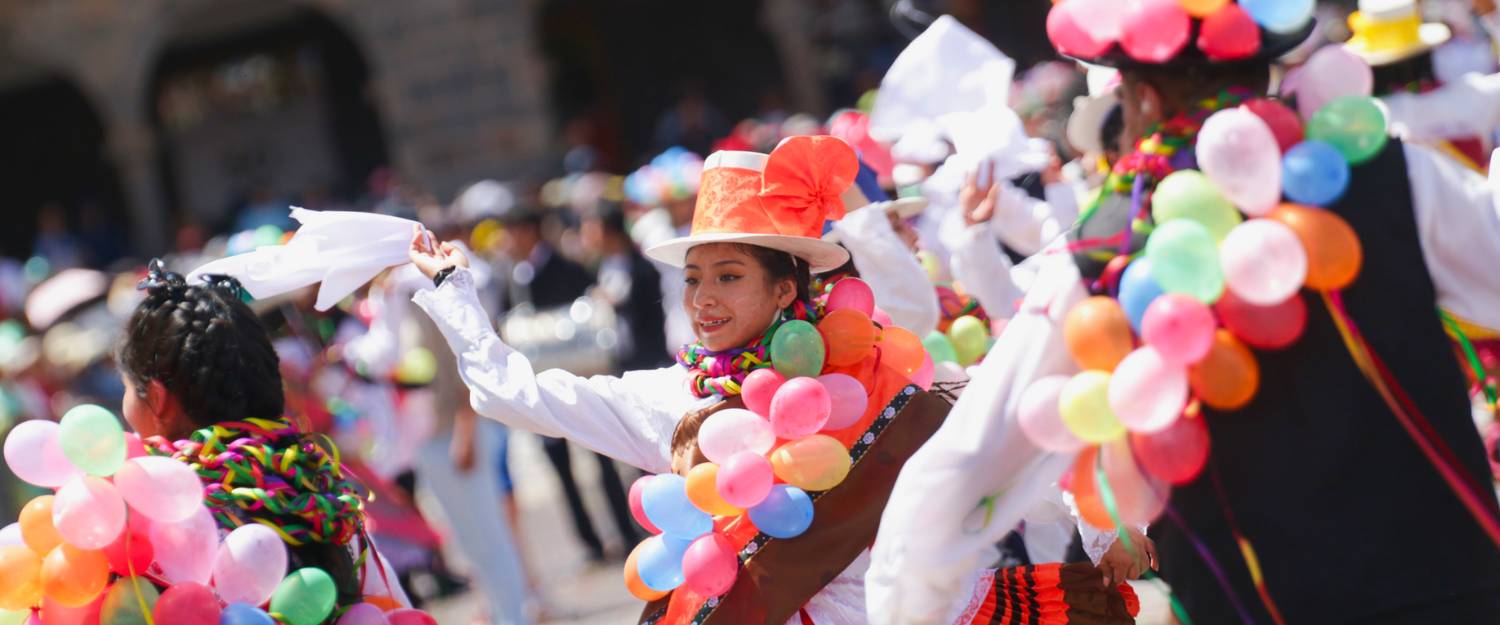
Food and Drinks at Carnival Time in Cusco
During Carnival in Cusco, the celebration includes a delicious food party where you can enjoy the most traditional dishes and drinks of the region. Some of the most famous ones are:
- Timbu or Puchero: A soup made with different meats, with cabbage, potatoes, moraya, chickpeas, and rice. Also, in a separate pot, they cook sweet potatoes, peaches, pears, and yucca. When served, they are presented separately, like “sancochado,” but with a cabbage leaf covering the ingredients.
- Kapchi: A light and creamy stew made with fava beans, onion, potatoes, milk, and cheese. It’s made even better with mushrooms and served with stuffed hot peppers and rice. It’s one of the most iconic dishes of the celebration.
- Frutillada: A traditional drink made with chicha de jora (a type of corn beer) and strawberries boiled with cinnamon and lemon verbena. After resting for eight days, it gets its special taste, perfect for enjoying the celebration.
